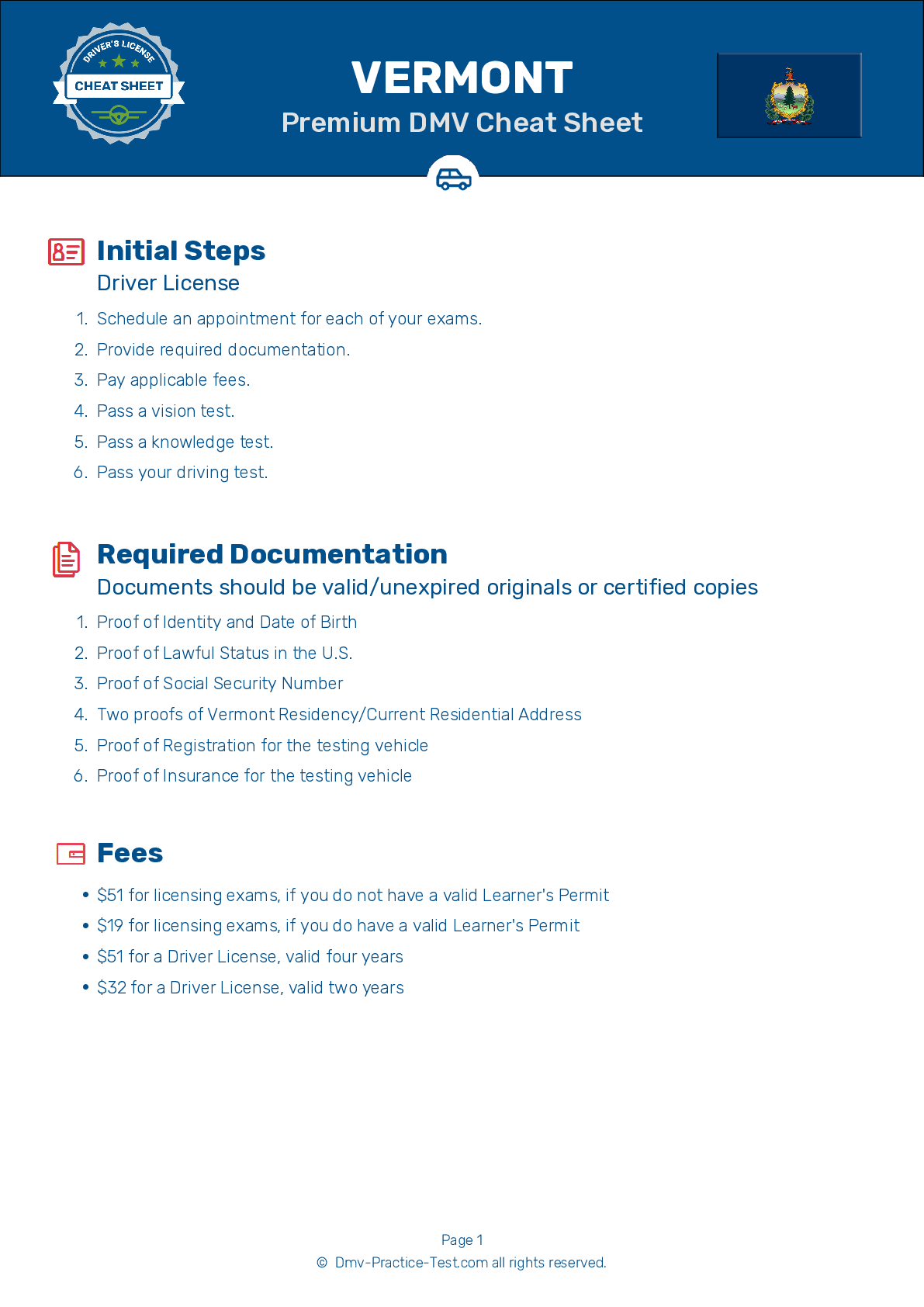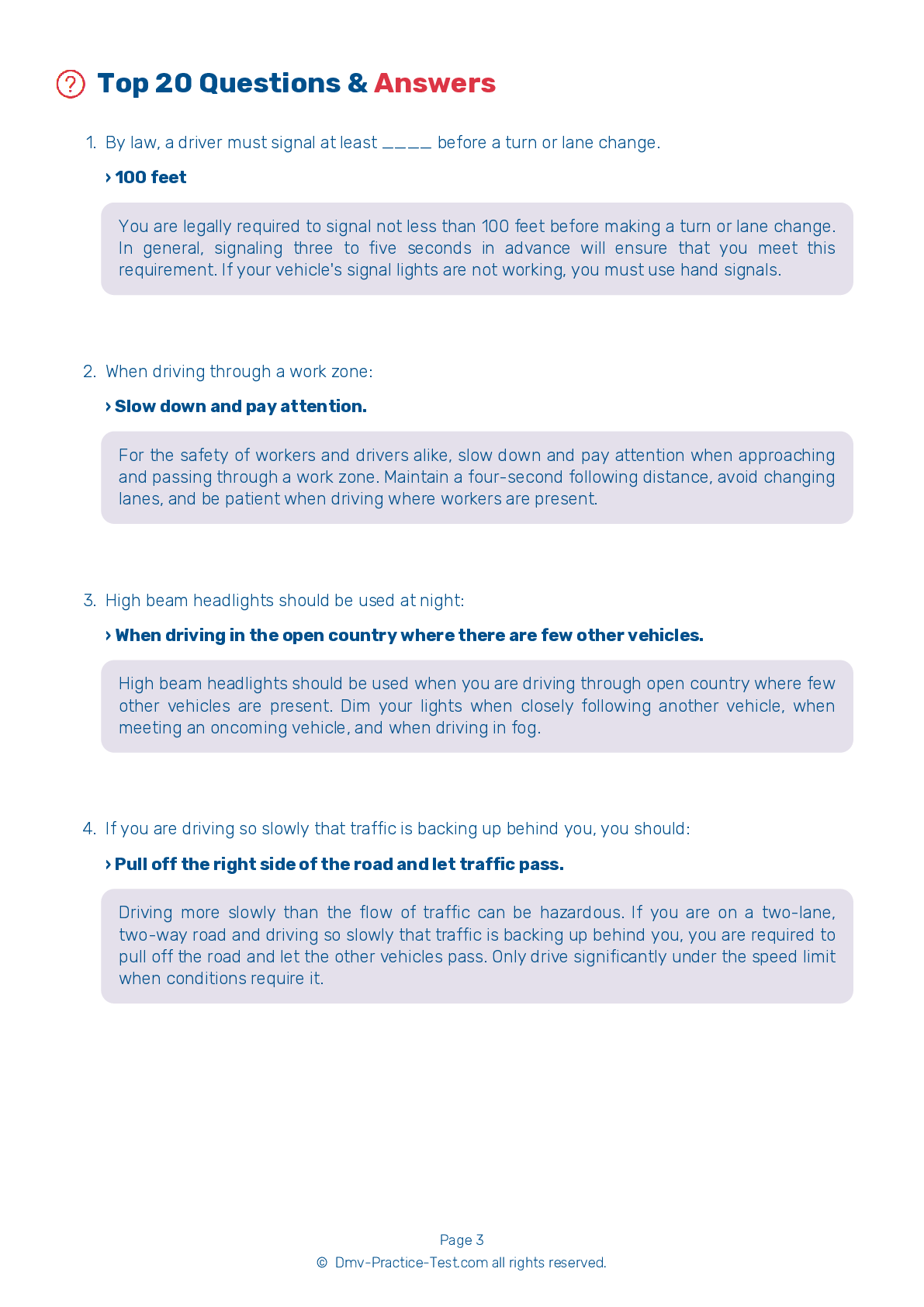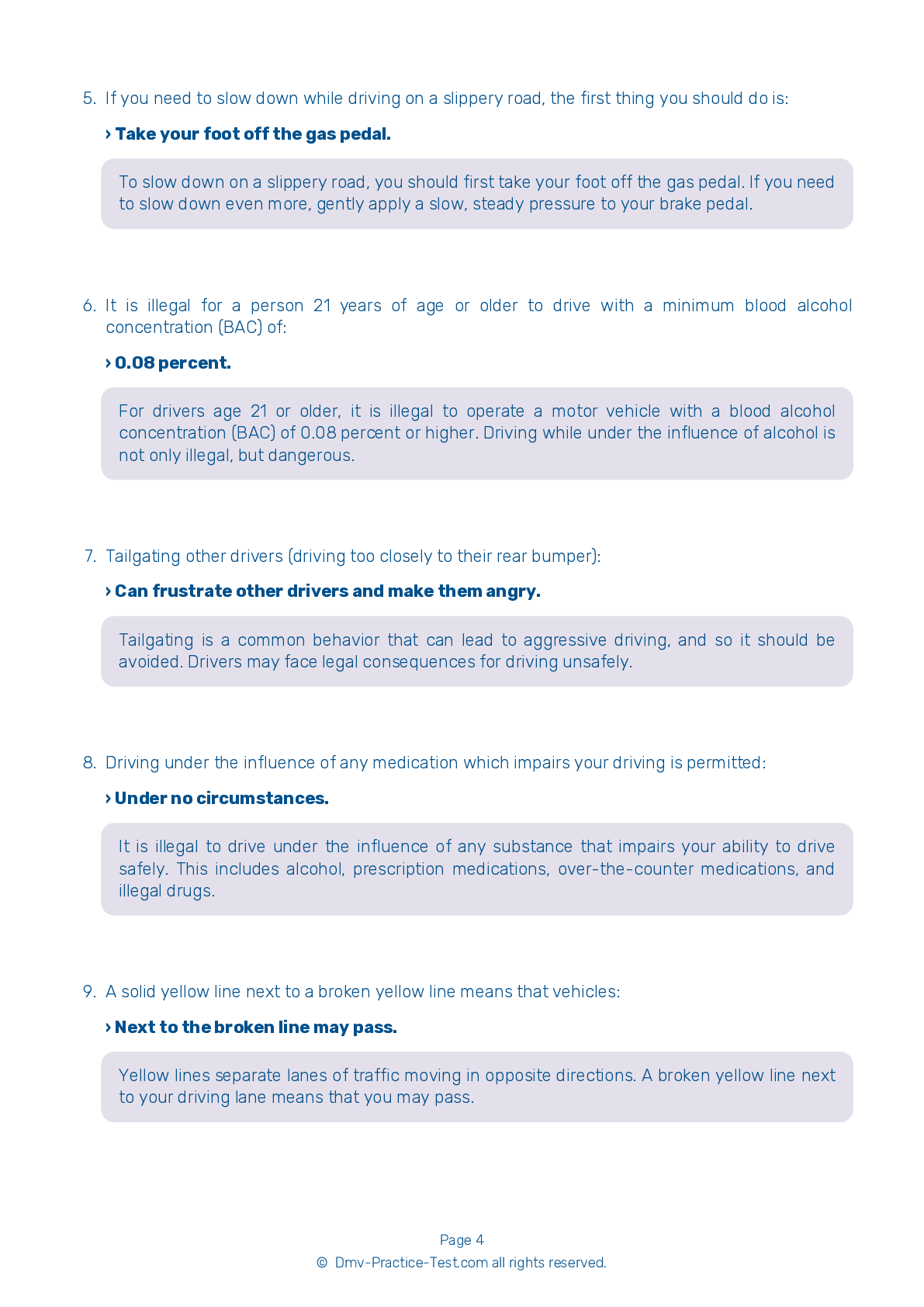FREE Vermont DMV Practice Test #3 Page 2 of 3
The Vermont DMV practise examinations have been updated for January 2025. It includes questions based on the Vermont Driver Handbook's most significant traffic signals and legislation for 2025. Use actual questions that are very similar (often identical!) to the DMV driving permit test and driver's licence exam to study for the DMV driving permit test and driver's licence exam.
On the practise exam, each question gets a tip and explanation to help you remember the concepts. The written component of the official Vermont DMV test will include questions about traffic rules, traffic signs, and driving statutes, as well as knowledge from the Driver Handbook.
To obtain a passing grade, you must correctly answer 16 of the 20 questions. Use the practise exam provided by the Vermont Department of Motor Vehicles to help you prepare for your instruction permit or driver's licence.
The DMV exam is available in several languages.
Using any kind of testing assistance will result in an automatic fail, and the DMV may take additional action against your driver's licence, so stay away from it.
7 . You must not drive your vehicle at a speed greater than:
You must not drive at a speed that is faster than is reasonable and prudent. You must drive at a speed that is appropriate for the area where you are driving, the type and condition of surrounding traffic, the presence of pedestrians, the weather, the quality of the road, and light conditions. You must drive within legal speed limits.
8 . Pennant-shaped signs indicate:
Pennant-shaped signs usually indicate no passing zones. Text will also be on the sign to confirm that it is a no passing zone.
9 . You approach an emergency vehicle that is stopped with its lights flashing. You must:
If you approach an emergency vehicle, tow truck, or roadside assistance vehicle that is stopped with its lights flashing, you must change lanes to allow the vehicle extra space. If there is only one lane moving in your direction, or if changing lanes would be unsafe, you must slow down to a speed below the posted speed limit and give the stationary vehicle as much room as possible. Always slow down and be prepared to stop when you approach an emergency scene.
10 . Car drivers should know that large trucks:
A large truck has large blind spots to the front, sides, and rear of the vehicle. Avoid lingering in these areas. Because of their larger size and weight, trucks require more room to maneuver and stop than passenger vehicles.
11 . A red arrow displayed on a traffic light means that:
Unless a posted sign indicates otherwise, a traffic signal displaying a red arrow means that drivers must come to a full stop and remain stopped until a green light or green arrow appears.
12 . When driving past a vehicle that has just stopped in a parked position on the side of the road, you should:
When passing a vehicle that has just parked parallel to the road, you should assume the driver will open the door as you approach. Use extra caution when driving near parked vehicles.
13 . When changing lanes, you can check your blind spots by:
You should turn your head to check your blind spots before every lane change.
See the exact questions that will be on the 2025 Vermont DMV exam.
99.2% of people who use the cheat sheet pass the FIRST TIME
LT gives us an insight on how the cheat sheet provided her with all the study questions she needed before taking her test.
Joe initially studied with the handbook and failed his test, he eventually found us online, studied and pass his test the first time around.
2025 Vermont | Frequently Asked Questions
1. Not checking mirrors and blind spots before changing lanes or turning.
2. Speeding or driving too slowly for the conditions or posted speed limit.
3. Not coming to a complete stop at stop signs or red lights.
4. Incorrect signalling or not signalling at all.
5. Poor parking, especially parallel parking.
Remember, practice makes perfect, so take time to hone your skills.



